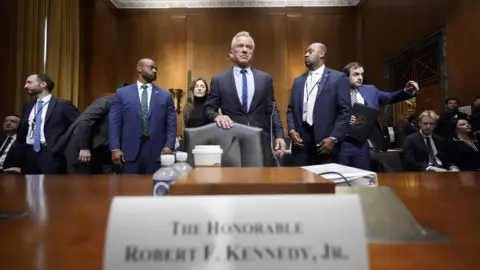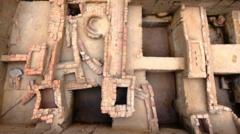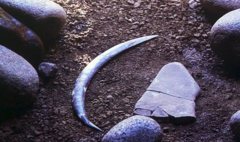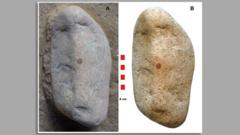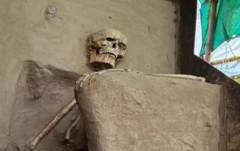In the early 20th century, an Indian archaeologist made remarkable strides in uncovering the mysteries of an ancient civilization, yet today, his name remains largely unrecognized. Rakhaldas Banerjee, known for his trailblazing discoveries, brought to light the ruins of Mohenjo-daro—an epicenter of the Indus Valley Civilization, one of the world's earliest urban societies. Although his work was pivotal, Banerjee’s legacy is colored by controversy and conflict during his time with the Archaeological Survey of India (ASI).
Born in 1885 to an affluent family in Bengal, Banerjee's excitement for archaeology was fueled by the historical monuments present in his hometown, Baharampur. His passion for history coincided with a sense of adventure that saw him seeking out ancient artefacts and relevant scholarly research across the subcontinent. His tenure at ASI began promisingly in 1910, and by 1917, he had climbed the ranks to become a superintending archaeologist in western India.
In 1919, while exploring the ancient site of Mohenjo-daro in present-day Pakistan, he discovered critical artefacts linked to the society that once flourished there, ranging from coins and seals to urban planning evidence, providing insight into one of humanity's foundational urban centers. Banerjee's excavations revealed layers dating back over 5,000 years, demonstrating the civilization's vast expanse.
Despite his groundbreaking discoveries, Banerjee's history was marred by disputes. His independent approach often clashed with established colonial protocols, and this tendency would later affect his standing within the ASI. Observers, including archaeologist PK Mishra, suggest that subsequent leaders of ASI, like John Marshall, overshadowed Banerjee's contributions, leading to historical amnesia of a significant figure in archaeology. Notably, Banerjee’s reports on Mohenjo-daro were never published, furthering his obscurity.
As difficult circumstances unfolded, Banerjee's financial practices came into question, resulting in disciplinary encounters that culminated in his transfer away from Mohenjo-daro. Subsequently, he faced accusations related to an idol theft, which, although ultimately dismissed, tarnished his reputation. By 1927, he resigned from ASI and took a teaching position at Banaras Hindu University. Tragically, his promising career was cut short when he passed away at 45, having lived a life marked by as much brilliance as controversy.
Today, Rakhaldas Banerjee stands as a complex figure in the exploration of ancient civilizations. His significant contributions to the knowledge surrounding the Indus Valley civilization deserve recognition beyond the shadows of his tumultuous career. Historians and scholars aim to revive his legacy, reminding us of the exuberant and adventurous spirit that led to crucial archaeological findings.
Born in 1885 to an affluent family in Bengal, Banerjee's excitement for archaeology was fueled by the historical monuments present in his hometown, Baharampur. His passion for history coincided with a sense of adventure that saw him seeking out ancient artefacts and relevant scholarly research across the subcontinent. His tenure at ASI began promisingly in 1910, and by 1917, he had climbed the ranks to become a superintending archaeologist in western India.
In 1919, while exploring the ancient site of Mohenjo-daro in present-day Pakistan, he discovered critical artefacts linked to the society that once flourished there, ranging from coins and seals to urban planning evidence, providing insight into one of humanity's foundational urban centers. Banerjee's excavations revealed layers dating back over 5,000 years, demonstrating the civilization's vast expanse.
Despite his groundbreaking discoveries, Banerjee's history was marred by disputes. His independent approach often clashed with established colonial protocols, and this tendency would later affect his standing within the ASI. Observers, including archaeologist PK Mishra, suggest that subsequent leaders of ASI, like John Marshall, overshadowed Banerjee's contributions, leading to historical amnesia of a significant figure in archaeology. Notably, Banerjee’s reports on Mohenjo-daro were never published, furthering his obscurity.
As difficult circumstances unfolded, Banerjee's financial practices came into question, resulting in disciplinary encounters that culminated in his transfer away from Mohenjo-daro. Subsequently, he faced accusations related to an idol theft, which, although ultimately dismissed, tarnished his reputation. By 1927, he resigned from ASI and took a teaching position at Banaras Hindu University. Tragically, his promising career was cut short when he passed away at 45, having lived a life marked by as much brilliance as controversy.
Today, Rakhaldas Banerjee stands as a complex figure in the exploration of ancient civilizations. His significant contributions to the knowledge surrounding the Indus Valley civilization deserve recognition beyond the shadows of his tumultuous career. Historians and scholars aim to revive his legacy, reminding us of the exuberant and adventurous spirit that led to crucial archaeological findings.






